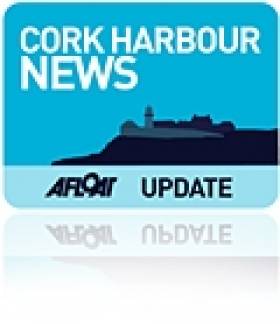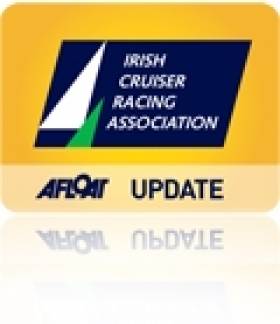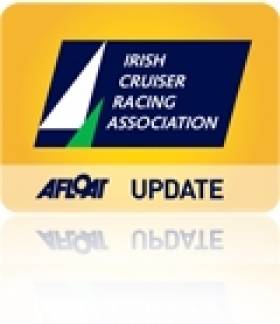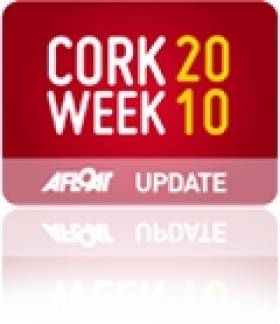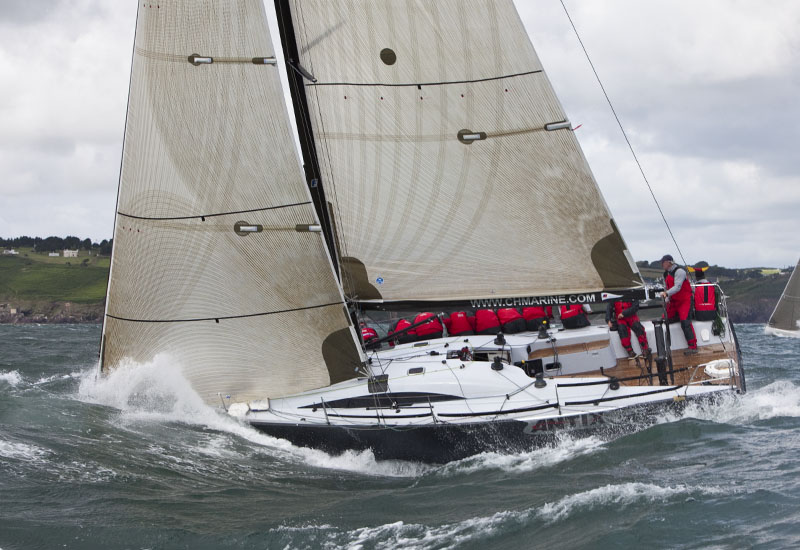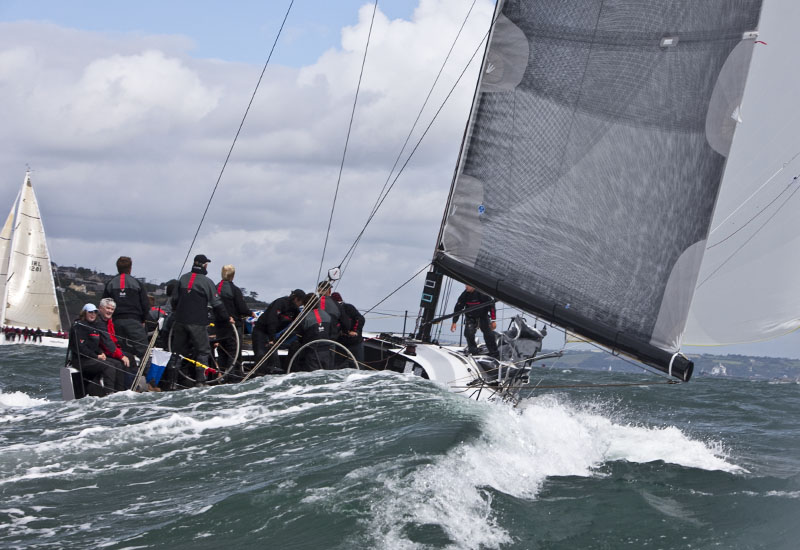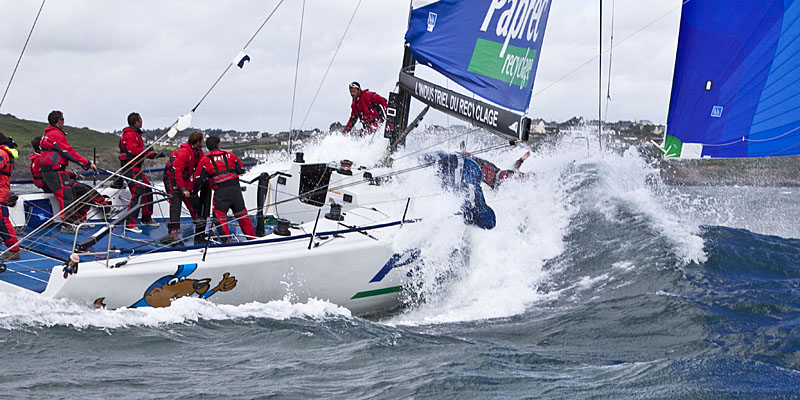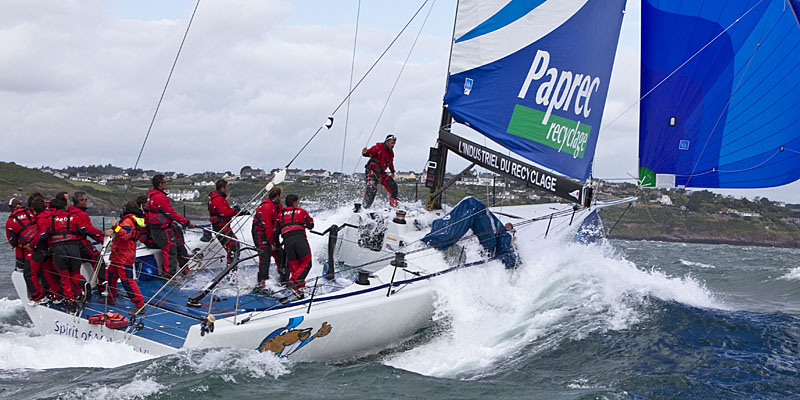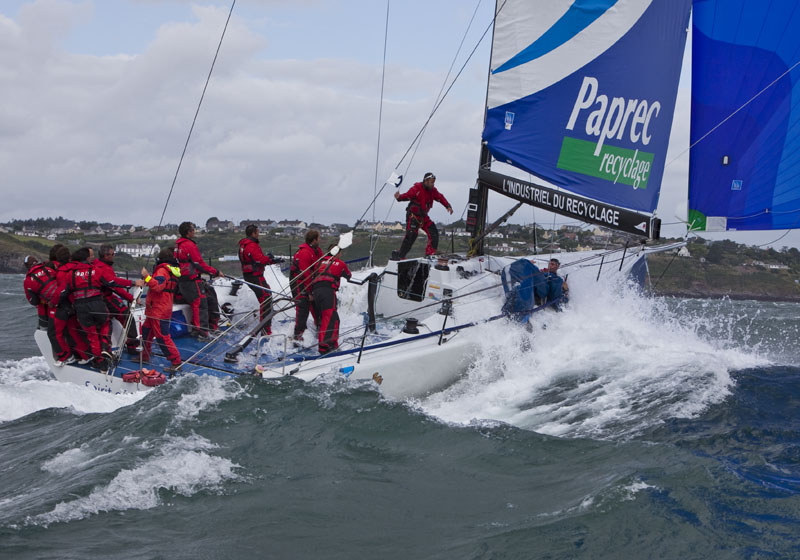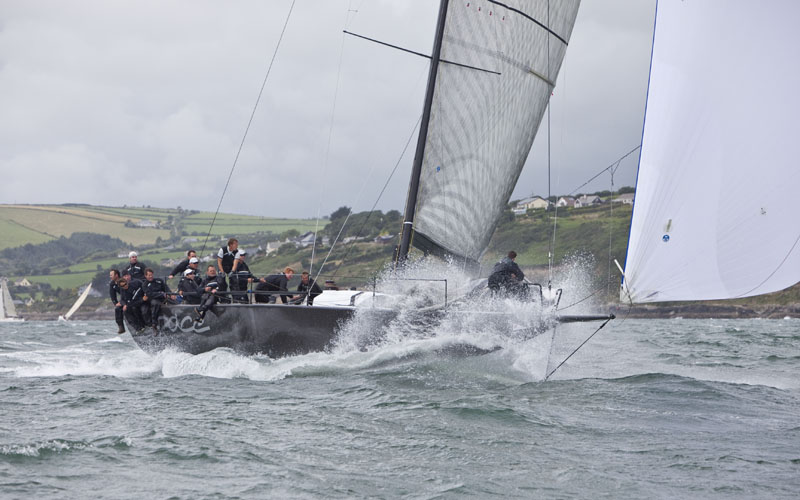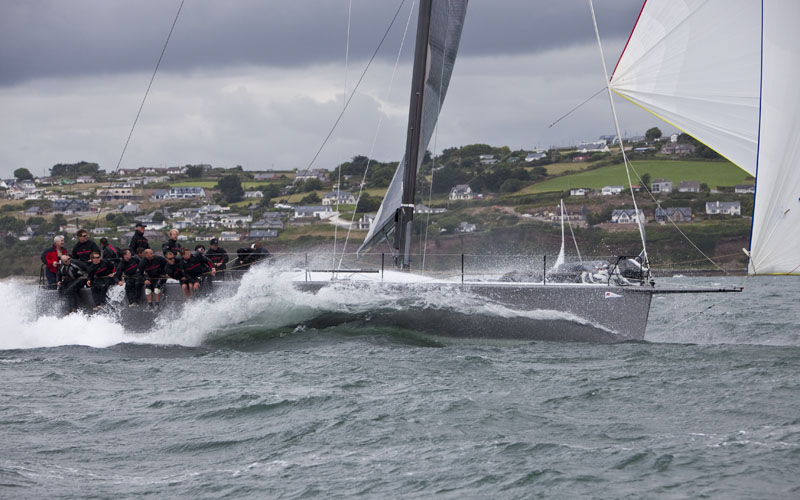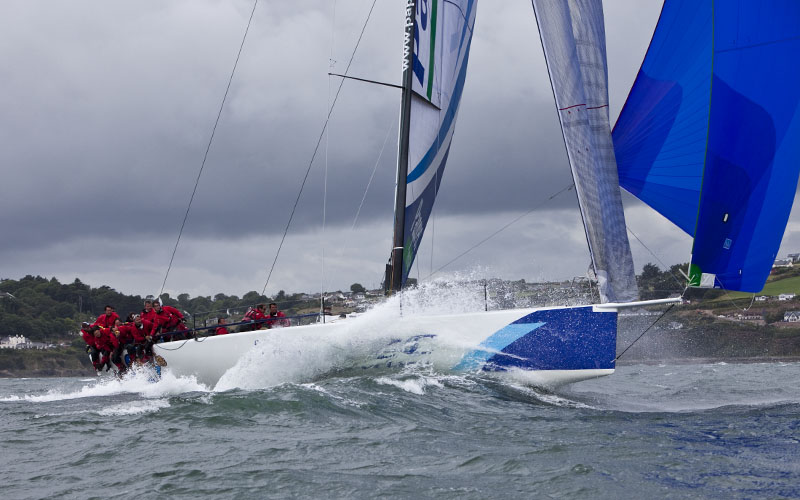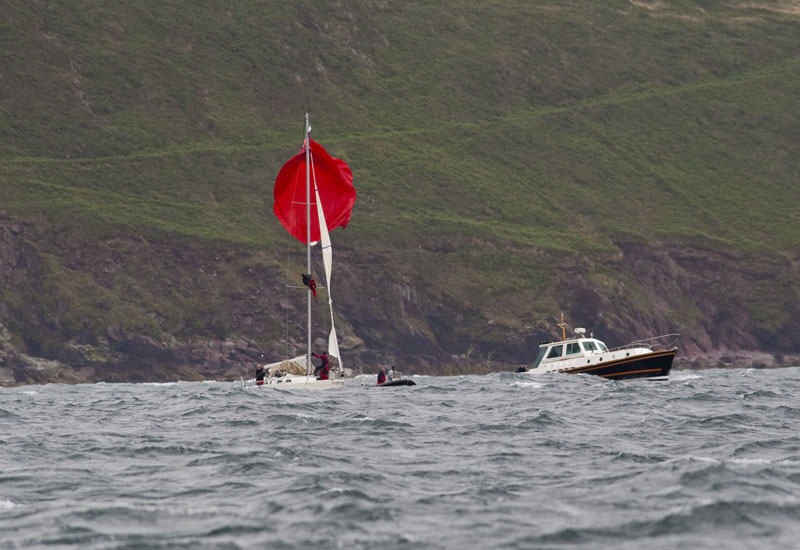Displaying items by tag: Cork Week
Cork Week Changes Dates for 2012
Next year's Cork Week regatta at Royal Cork Yacht Club, one of Ireland's biggest sailing events, has changed dates from 30th June – Friday 6th July to 7th-13th July 2012 following consultation with both local and overseas participants.
The decision was made to change the date of the biennial event because it would have otherwise have clashed with Britain's Round the Island Race on June 30th.
Hot site in Cork Harbour
Haulbowline island is making headlines because of cancer-causing residue, left over from the Irish Steel plant that once occupied the land. It has been confirmed that a cache of 500,000 tonnes of slag and toxic waste material were buried at the former steelworks. Now the Government has three months to start cleaning the toxic waste site in Haulbowline or risk court action by the European Commission.
The report, compiled in 2005 but, like the toxins, only seeping out later, shows high levels of several heavy metals at the plant, both in soil samples and water samples.
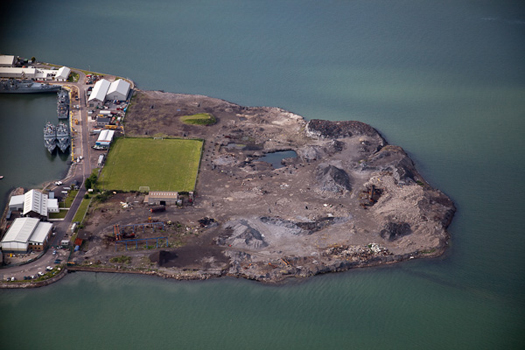
The site at Haulbowline. Photo: Bob Bateman
Chromium six, which causes cancer both by inhalation and by infecting groundwater, was revealed to be present in massive quantities at Haulbowline. The mineral is a highly toxic anti-corrosion agent used in the steel-making process, but which is gradually being phased out due to its toxicity.
The site is a blight on one of the finest natural harbours in the world, and home to one of the best regattas in the world. How can sailors make their views known on this subject? We'd like to hear your thoughts – [email protected]
Irish Cruiser Racer Champs Shaping up for Cork Harbour
An exciting addition to the 2011 Nationals is the visit of up to 12 top boats from the UK Quarter Ton fleet. This is a class based in Cowes, consisting of 1970-1980s old IOR rule boats lovingly restored to within an inch of their lives and sailed by their owners many of whom are as vintage as their boats - la creme de la creme! They have begun to make an annual pilgrimage to southern Irish waters in recent years attracted by the quality of Cork Week and Sovereign's Cup and ICRA are delighted to welcome them to the Irish Nationals.
Unbelievably one of these old quarter tonners, the beautiful Davidson designed Black Fun, is presently on a container ship on her way from Wellington New Zealand to these shores to take to take her chances against the local opposition. Black Fun is one of the early entries to the ICRA nationals.
These visiting boats will provide stiff competition to local boats such as Neil Kennefick and Joxer O Brien's Tiger, Eamon Rohan's new Farr designed Anchor Challenge, Jimmy Nyhan's Outrigger and Ian Traver's Bandit.
ICRA has responded to this development by providing new Open Quarter Ton Trophies to cater for this fleet and its professional participation. The visitors will race in division 3 for the new trophies alongside the regular fleet sailing under standard ICRA regulations.
Division Zero is shaping up very well with entries from such leading boats as Anthony O Leary's Antix and Robert Davies Roxy V1 of Rolex Commodore's Cup winning fame as well as the beautiful Mills 36 Crazy Horse, of Nobby Reilly and Alan Chambers, the Conor Phelan's Royal Cork Ker 37 Jump and the still potent Corby 39 Gloves Off of Kieran Twomey. Division 1 will see loyal supporters like the Mills 30, Raptor and and the Corby 33 Rockabill do battle with local boats such as Jelly Baby and True Pennance.
Division 2 promises top Class competition with the former Colwell and Murphy owned national champion, the Corby 25 Kinetic, now Azure and sailing under the burgee of Kinsale YC and helmed by Brian Goggin competing with a number of sister boats including Vinny O Shea's Yanks $ Ffranks, Denis Coleman's Thunderbird, Conor Ronan's Ruthless from Sligo YC as well as many others such as Dux, Slack Alice, Zoom, Indigo, Sunburn, Xebec and Kodachi.
There is a Division 4 introduced for the first time this year with SCORA putting up the trophies.This is in response to a strong local Cork Harbour fleet in this Band.
The ICRA Corinthian Cup for Non-Spinnaker Boats comes to the South Coast also for the first time and a second Cup has been added to cater for both IRC and ECHO divisions.
This is a real opportunity for non spinnaker boats to compete in a Regatta of this calibre and a big fleet is expected.
Entry fees for boats entered by 29th April are reduced from €175 to €125 so get those entries in during April to take advantage of this incredible value. Reduced lift in and out fees and a great accomodation package are in place with Carrigaline Court Hotel.
All the latest Irish Cruiser Racing Association (ICRA) News
French Van Promotes Great Week of Irish Sailing
It's a great looking team sailing van, a brilliant advert for Irish sailing and an amazing photo of a TP52, planing like a dinghy in Cork harbour! The French Paprec Recylage Sailing Team have had their entire sailing van decorated with a dramatic Bob Bateman picture from Cork week 2010. The photos of the event HERE were a highlight of the 2010 season.
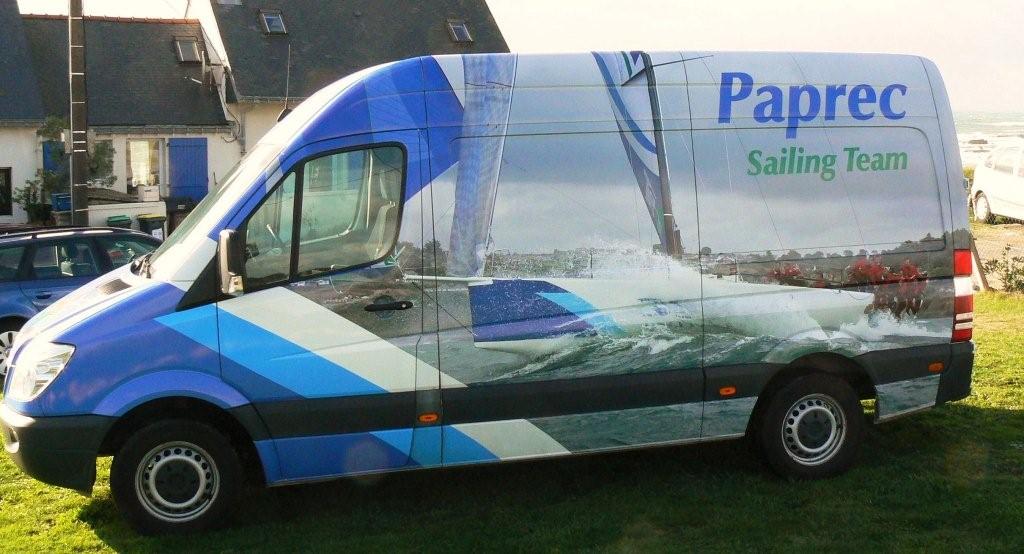
Irish Sailing and Boating Regattas and Maritime Events
Reporting on the latest race news and regatta information is the one of the most important aspects of the Afloat.ie website. This page covers everything from round the world race stopovers, the arrival of the Tall Ships as well as domestic boat shows and a calendar of events.
'Raging Bull' Overtakes 'Errislannan' in 'Boat of the Year' Poll
Raging Bull overtook Errislannan in Afloat readers opinion poll at lunch time on who will win the Irish Cruiser Racing Association (ICRA) Boat of the Year Award, in just over a month's time. Over 350 voters have given their opinion so far on the ten boat shortlist produced by Afloat. Errislannan proved an early poll topper since voting began last Thursday but as late as lunchtime today votes for Raging Bull saw a dramatic lift, bringing the Irish Sea offshore champion ahead of the Top Cork week Sigma 38. At 2pm a third of the votes cast were for Raging Bull. Errislannan was on 31%. Tiger had 16% and was in third place ahead of Antix with 31 votes. The poll is located on the left hand column of the home page. Cast your vote now!
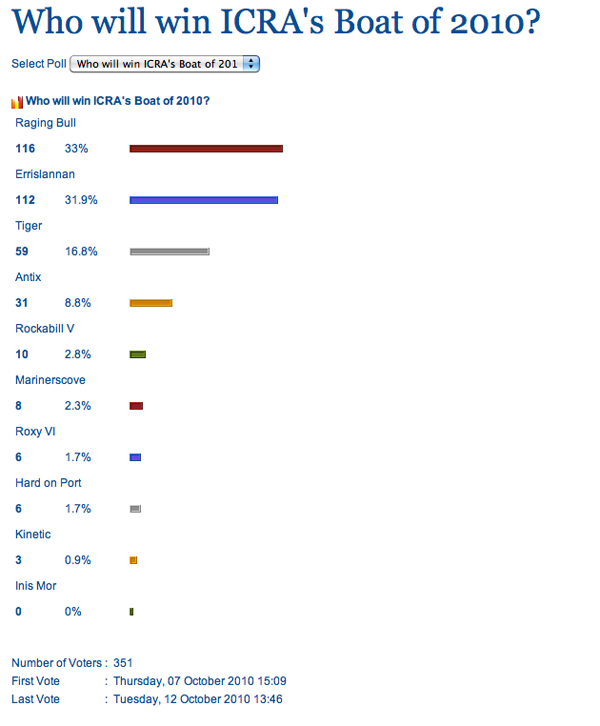
Majority of Lifejackets Fail Lifeboat Test
Over 90% of lifejackets tested at Ireland's two biggest sailing centres failed simple checks carried out by the Royal National Lifeboat Institute (RNLI) last week writes Irish Times Sailing Columnist David O'Brien.
From 91 jackets tested in Cork and Dublin, 83 failed a free inspection.
The annual Lifejacket check service carried out by the institute was only taken up by 40 sailors from an estimated 1,000 competing crews at Cork week. 35 failed the test.
In Dun Laoghaire, last Saturday the RNLI offered the service again prior to Dublin Bay racing, where the total fleet is over 300 boats, the country's biggest sailing centre. 51 from a possible 2500 lifejackets were checked. Only three were deemed ok.
There were several different reasons for the failures including rusty or out of date inflation capsules but the bulk were rejected because jackets were not fitted with crotch straps. "It is the RNLI opinion these lifejackets may not work to their full potential because they may not keep the wearer's airway above water", says the RNLI's Kevin Rahill.
It's an important point so it is a wonder how lifejackets can be sold without them. What is not explained though is why so few sailors took up the free check or why nearly half the lifejackets presented had out of date capsules?
There is little doubt there has been an increased use of lifejackets in recent years but as last weeks survey shows it's equally important to know the lifejacket you are wearing actually works if you end up in the water.
RNLI Lifejacket Checks
Crosshaven:
LJs Checked 40
Ok 5
No Crotch Strap 18
OOD Capsule 22
OOD Hammar 1
Mk 3 Head 1
Rusty Cyl 2
Slack or Cyl out 4
Fired 3
Condemned (evidence of severe damage to fabric, mechanism etc) 1
Dun Laoghaire:
LJs Checked 51
Ok 3
No Crotch Strap 30
OOD Capsule 21
OOD Hammar 9
Mk 3 Head 1
Rusty Cyl 4
Slack or Cyl out 2
Fired 1
Condemned (evidence of severe damage to fabric, mechanism etc) 5
Since this article first appeared in the Irish Times on Friday, July 27 plans are afoot to test Lifejackets again in Dun Laoghaire in August or September.
We want your view on our forum thread HERE!
Related Safety posts
RNLI Lifeboats in Ireland
Safety News
Rescue News from RNLI Lifeboats in Ireland
Coast Guard News from Ireland
Water Safety News from Ireland
Marine Casualty Investigation Board News
Marine Warnings
It's no longer of Boat of the Week but boats of the week at Cork week this evening as Dave Dwyer's Mills 39, Marinerscove.ie and Paul Kirwan's Sigma 38, Errislannan have been jointly awarded Cork's top award. You could feel the tension on the dock, with virtually all the classes still to be decided, as the yachts motored out to the combat zone along the narrow confines of Cork River. The conditions had eased from the previous maelstrom, but this was a day were smart sailing in the combined 197-boat fleet put boats in winning positions.

Blue Jay won the J109 European Championships at Crosshaven. Photo: Bob Bateman
Watery sunshine, 15 knots from the northwest were to provide some tricky conditions for all classes. Cork Harbour and the surrounding area have huge land effects on the wind, especially today, the gradient made for constant changes.
It proved to be a day for keeping heads out of the boat, looking for changes in the weather. However, that is only one part of the overall puzzle. Boat-on-boat tactics and strong tides are also in the mix. Racing today at Cork Week was like a game of three-dimensional chess.
IRC Super Zero
Johnny Vincent's TP52, Pace came out on top after five days of thrills and spills in the big boat class. Austin Fragomen's TP52, Interlodge was second but only on count back from Gray and Laidlaw's Farr 52, Bob.
Tied on points, Fragomen's TP52, shipped over form the USA to compete at Cork Week beat the Isle of Wight based Farr 52, by the virtue of winning one more race in the eight race series.
The Racing in Super Zero has been sensational this week but also pretty hard on the crew. Andy Oliver is the bowman on Johnny Vincent's TP52, Pace. He first came to Cork Week at just 17 years of age and since then he has raced all over the world;
"I have got to say that was the toughest week I have had for a long time, all of the crew on Pace did a great job, not just the bow but working on the pointed end with the boat screaming along at 24 knots is pretty tough! Cork Week is very unusual, in that it has a huge variety of courses that intensifies crew work. We are all a bit tired, but a fair few of the crew on Pace will be looking forward to a couple of pints of the black stuff in the yacht club after the prize giving."
IRC Zero
Dave Dwyer's Mills 39 Marinerscove.ie had a bad start to the regatta but showed great tenacity to come back with a vengeance to win the highly competitive class on the last race, as tactician Andy Beadsworth explains;
"We have made a few changes to the boat this season, including increasing the sail area to give the boat better light wind performance for the forthcoming Rolex Commodores Cup. A windy Cork Week answered a few questions about how we would go in heavier air. Our two results at the beginning meant we were playing catch up and we just kept chipping away. It has been a great regatta, a real punch-up with some well sailed boats."
Bernard Lambilliotte's Swan 45, Nemo of Cowes haS been the boat to beat in Class Zero, all week and will obviously be disappointed to lose out on the last day. Anthony O'Leary's Ker 39, Antix was third but finished the regatta in good shape.
J 109 European Championship
The crew on Greg Burgess's J 109, Bluejay punched the air with delight, after taking the gun in the first race of the day. All of the crew is from Wales and apart from Burgess, are all young lads as an ecstatic Burgess explains;
'We all go snowboarding together and we have never raced the boat as a crew before. I am 55 but although I am getting old, I feel like an 18 year old today! We didn't expect to win this in our wildest dreams. I stopped racing the boat three years ago, to drive my son around, competing for the British Optimist Team. The crew come from Swansea, Cardiff and North Wales, they have all been sleeping on the boat and partying every night. What a week!"
Brian Moreton's Juke Box was second overall and Ian Nagle and Paul O'Malley's Jelly Baby, snatched third place on the last day from Robert O'Leary's Jeroboam.
IRC One
There was an incredibly close finish in the last race, as the top three boats were separated by 26 seconds, on corrected time. Conor & Denise Phelan's Ker 37, Jump Juice snatched the class title by a single point from Robert Davies' Welsh team on Corby 36, Roxy 6. British Corby 37, Impetuous were third.
These three boats had a titanic struggle all week, especially as they were often side by side on the water. None of them scored worse than a fourth in the seven race series. IRC One produced probably the closest racing of any of the classes racing at Cork Week 2010. Jump Juice were also class champions in 2006.
Conor and Denise are based in Cork and feel Cork Week is a special regatta.
"Since Denise decided to buy Jump Juice, we have raced in the Solent, Scotland and Dun Laoghaire but Cork Week beats them all; the race management is first class and the variety of course and conditions always makes it interesting. We had incredibly close racing this week. It has been absolutely fabulous." Commented a delighted Conor Phelan
IRC Two
Paul O'Higgins' Corby 33, Rockabill V started the regatta in fine form but faltered half way, it was only on the last race that they came back, to clinch the class title from Sailing Logic's Reflex 38, Visit Malta Puma with Rob Mc Connell's A 35, Fool's Gold, finishing strongly to take third.
Paul O'Higgins, owner of Rockall V sums up the week; 'I think the crew on Rockabill V got a bit too complacent after a good start and enjoyed the full facilities of Cork Week, the day before we had a very breezy day, so some of the hard work was our own doing! However, all credit to the opposition, Puma and Fool's Gold sailed well and were worthy opponents."
IRC Three
John Moorehead & Chris Ferres J 35, Bengal Magic have had a cracking week and finished in style by taking a fifth win in the last race of the series but only be 15 seconds from Richard Calveley's Elan 37, Va Va Voom. Ross McDonald's X 332, Equinox will have enjoyed the fresh conditions at Cork Week and claimed second, by some distance from Martin Breen's Harley 33, That's Life!
IRC Four
Paul Kirwan's Sigma 38, Errislannan were assured of both the class title and European Championship and did not compete in the last race. Leaving Paul & Deirdre Tingle's First 31.7, Alpaca and Conor Ronan's Corby 26, Ruthless to battle it out for third. Alpaca beat Ruthless in the last race of the series to take the runner-up spot for the class with Ruthless third overall.
IRC Five
Vincent O'Shea's Corby 25, YANKS $ FFRANCS have had a great Cork Week and won the class by an eight point margin. The Corby 25 is often racing in close quarters with sister-ships and with 14 boats on the start line and many other boats in the race area, this was a factor in their ability to stay out of trouble and win the class.
John Allen's X 302, Antix finished in style, winning the last race of the series by just 29 seconds. Ted Crosbie's x 302, No Excuse was third in class. Event Chairman, Peter Deasy was racing on Sunfast 32, Bad Company. He was disqualified from the last race, proving there is fair racing for all at Cork Week!
IRC Six
O'Brian, Kenefick and Kenefick's Quarter Tonner, Tiger is a real head turning boat and was the only yacht to post straight bullets for the regatta but it wasn't as easy as the score line suggest and it never is, as co-owner, James O'Brian explains;
"Flor O'Driscoll is a top sailor and we had to be at the top of our game this week, especially as we needed to be ahead of him on the water, because of our handicap. It has been a hard week and a fair few of us are over 50, so we are a bit tired to be honest. But I ran this event in 1990 and I have never won it, I didn't think that it would take me 22 years."
Flor O'Driscoll's J 24, Hard on Port was second and Jason Losty's Thomas 25, Woody sailed a very consistent regatta to take third place.
Mixed Sportsboat and SB3 Class
Michael Wilson's 1720, YKnot was in impressive form all week, scoring eight podium finishes to claim the class title. Bryan Hassett's 1720, Dark Side was runner up and the two Hassett brothers were enjoying a pint at the Royal Cork Yacht Club after racing with other 1720 crews. Great racing and camaraderie, is what Cork Week is all about. Malcolm Thorpe's 1720, King Louie won the last race of the series to claim third but only on count-back from Denis Murphy's Aquatack.
Ben Duncan and Brian Moran's Sharkbait bit back after being called OSC in Race 5, to hold off Trevor D'Arcy's Bullet. Race 6 was a photo-finish, with just six seconds separating the two. Bullet won the penultimate race, putting pressure on Sharkbait but they held there nerve to take the last race and the class title by 19 seconds. Ronan Downing's SB3, Ronan Downing's Profile Park was third.
Class winner Ben Duncan was disappointed to miss out on racing on Thursday but he was delighted to come to Cork Week.
"We wanted to race, especially after getting called over the line the previous day but we made the most of it by going for lunch on our enforced lay-day at the stunningly beautiful East Ferry, in Cork Harbour. We have had a great time here in Cork."
White Sail One and Two
46 boats competed in the two classes over the regatta and they enjoyed a picturesque finale to Cork Week 2010 with the Harbour Race. The White Sail fleet are composed of teams that don't want to put together a full on race crew and prefer to sail with a smaller group of family and friends. What's more, many of these boat would not be competitive against the more high performance boats in the other classes. The White Sail Class gets them off the moorings and out into some of the best sailing grounds in the world.
In White Sail One, Philip Dilworth's Grand Soleil 40 was the winner and in Class Two, McCarthy, Clarke & McMullin's Half Tonner Harmony was first in class.
A huge crowd witnessed the prize giving, held at the Royal Cork Yacht Club, shortly after racing. Officiated by Cork Week Event Chairman, Peter Deasy and RCYC Admiral, Paddy McGlade.
It was decided that the Boat of the Week for Cork Week 2010 should be jointly awarded.
Joint Boat of the Week
Dave Dwyer's Mills 39, Marinerscove.ie
Paul Kirwan's Sigma 38, Errislannan
The Prix d'Elegance Trophy
Philip Scully's Custom Oyster 82, Starry Night of the Caribbean
The Sisk Trophy for best Corinthian yacht
Neil Martin's J 133, Jammy Dodger
Day 4 Cork Week Vid is a Cracker! Watch HERE!
Looking more like a leg from the Volvo Ocean Race, Cork Week yesterday enjoyed an epic day four and this Digby Fox video (below) proves it! A 20 knot ripper!



























